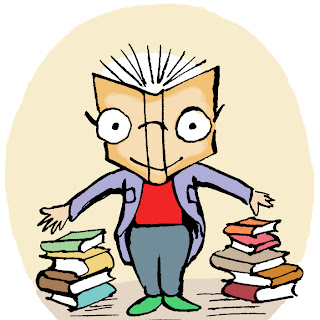NON-FICTION KNOWHOW Research tips
Unsure where to start with non-fiction? Claire Watts shares some insights.
Check the market
Visit bookshops and libraries to find out what topics are popular. You’re looking not just for what there are lots of copies of, but for which sections are biggest. Some topics are perennially popular – every publisher you can think of has at least one book about dinosaurs and one about the Egyptians, some very straight, some quirky. If you can come up with a new way to present these popular subjects, you might grab a publisher’s interest.Check the curriculum
If the topic of your book is featured on the school curriculum, you’ve got a ready-made audience. It’s a good idea to check out exactly what the curriculum says, so you can tell publishers (and hopefully later publicists, schools and libraries) how your book fits with curriculum requirements. And, of course, the bonus of having a curriculum-friendly book is that it opens up the possibility of school visits! If your book is designed for the trade market (bookshops and libraries) what publishers are looking for is a book that will appeal to parents and teachers who want to assist children’s learning beyond the curriculum. Your book should be designed to support and extend the curriculum. If you’re writing for the educational market (i.e. you expect your book to be used by teachers in a classroom situation), you’ll need to make sure you cover every element of the curriculum. Most educational publishers won’t consider proposals from authors who are not teachers or educational experts.Think about where your book might sell
Many publishers rely on selling international co-editions of non-fiction books, so it’s worth looking beyond the curriculum that covers your own region to find out if your book would be useful worldwide. Curriculums tend to be long and complex, but they’re easily accessible on the internet and once you’ve struggled through the first one the task of reviewing them gets easier, I promise!Even if you’re not linking your book to the curriculum, if you want your book to sell worldwide, it’s worth considering whether your subject is too country-specific. If you mention seasons, for example, be aware that you will have no chance of selling your book in a country such as Australia where the seasons are different. Of course, you may wish to write a book with a deliberately narrow focus, such as a history book which relates to a particular area, but in that case are likely to be submitting your proposal to a small local publisher rather than a large, international one.
Start from the beginning
Once you’ve decided what you want to write about, start from the very beginning. Find a dictionary or a concise encyclopaedia. Look up your topic.A dinosaur is…
The ancient Egyptians were…
Keep in mind that you can’t assume children know things that seem obvious to you. What does ‘prehistoric’ mean? Where is Egypt?
At the same time understand the age group you are writing for and don’t patronise. Don’t be scared of using larger words or technical terms– this is what glossaries are for..
Read widely around your subject
When you write a non-fiction book for children you need to know far more about the subject than will ever appear on the page. A couple of good adult books on the subject will get you started. Browse the Internet, go to museums and exhibitions. Keep asking the questions children will wonder about – if you say they wrap Egyptian mummies in linen bandages, you might need to explain what linen is – and remember that they’re curious about things that might not immediately occur to you – I find anything to do with food goes down well!| A selection of research books leftover from my book Natural Disasters. The best thing about non-fiction writing is the weird research alleys it leads you down! |
Look out for quirky facts
As you research, watch out for record-breakers, amazing stories, juicy details, extraordinary facts, things that’ll make kids laugh – anything that will keep your child reader’s attention. I’ll be looking at how you ca use these elements to make your book fun and engaging in the next Non-fiction KnowHow.
Claire Watts writes and edits non-fiction for children and is Co-editor of Words & Pictures. You can contact her on editor@britishscbwi.org









No comments:
We love comments and really appreciate the time it takes to leave one.
Interesting and pithy reactions to a post are brilliant but we also LOVE it when people just say they've read and enjoyed.
We've made it easy to comment by losing the 'are you human?' test, which means we get a lot of spam. Fortunately, Blogger recognises these, so most, if not all, anonymous comments are deleted without reading.